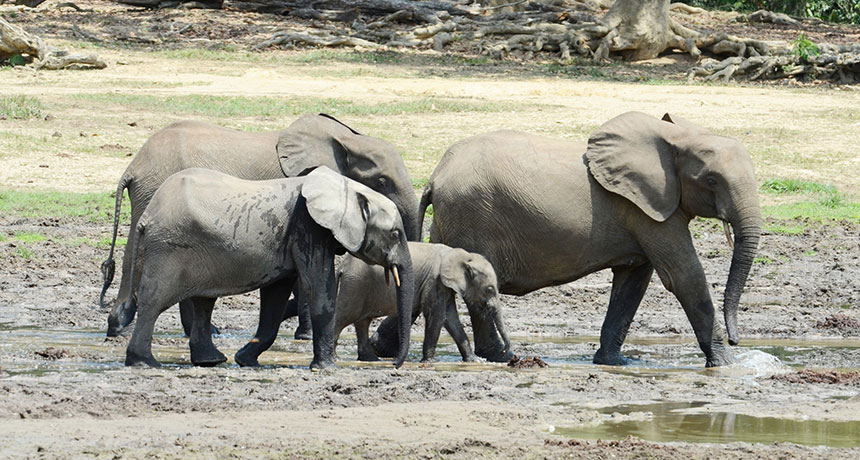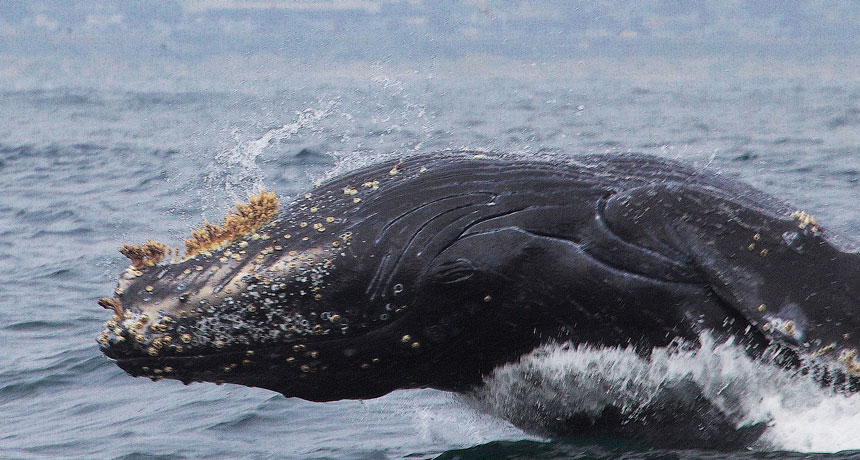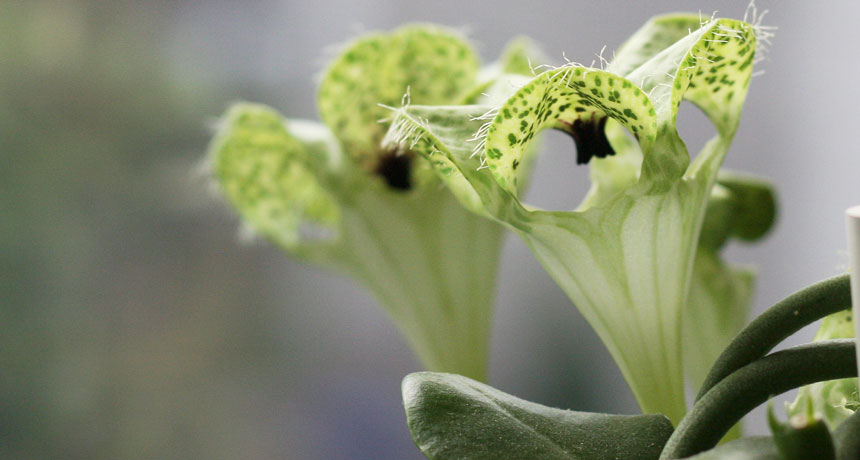As IUCN votes on ivory trade, elephants’ future looks bleak

The fate of Africa’s elephants may be decided before the weekend is out. Members of the International Union for the Conservation of Nature World Conservation Congress, happening this week in Honolulu, will decide on Motion 7, whichwould call on the IUCN to encourage governments to shut down the ivory trade — and provide help in doing so. The hope is that ending the demand for ivory — and with it, hopefully, the large-scale elephant poaching that has been going on for more than a decade — would allow both savannah and forest elephants to recover. But two new studies show that the species have declined so much that, even after poaching ends, their populations will take decades to recover.
The first study presents results from the Great Elephant Census, the first-ever continent-wide effort to survey savannah elephants (Loxodonta africana), the more common of the two species of elephant in Africa. Wildlife researchers, conservation organizations and government agencies worked together to conduct aerial surveys of elephant herds in 18 African nations. They cataloged more than 350,000 elephants (not including the 22,700 counted in Namibia in 2015, or elephants in South Sudan and Central African Republic, which have yet to be counted). An estimated 84 percent of the animals were living in protected areas, the team reports August 31 in PeerJ.
While that may sound like a lot of elephants, the raw numbers are a bit misleading. That’s because not long ago there were so many more. The researchers estimate that 144,000 savannah elephants were lost between 2007 and 2014, with elephant numbers in the surveyed populations falling by about 8 percent per year largely due to poaching. If these populations continue to decline at that rate, their numbers would be halved every nine years, and smaller populations could be wiped out completely, the researchers warn.
And living in a protected area, like a park or nature reserve, doesn’t mean that the elephants are necessarily protected from poaching or conflict with humans. The Great Elephant Census team found high levels of elephant deaths, which could indicate poaching, in Tsavo East National Park in Kenya, Mozambique’s Niassa National Reserve and Rungwa Game Reserve in Tanzania. “Heightened antipoaching measures are needed in these and other protected areas to ensure that they do not become mere ‘paper parks’ for elephants,” the researchers write.
The situation may be worse for forest elephants (L. cyclotis), which scientists discovered only five years ago are a genetically distinct species. No one is quite sure how many forest elephants there are (the Great Elephant Census didn’t count them), but there are far fewer of these elephants than their savannah cousins. Like savannah elephants, forest elephants are dealing with losses from poaching, habitat loss and human conflict. A 2013 study estimated that they lost 62 percent of their numbers between 2002 and 2011, and a 2014 study estimated that as much as 10 to 18 percent of the forest elephant population disappears every year. And a new study finds that these elephants may be even less equipped than the savannah elephants to bounce back once poaching stops.
Because it has taken a long time to recognize that forest elephants are their own species, there isn’t a lot of basic biology known about them. But researchers collected data on more than 1,200 elephants that visited a forest clearing in the southwestern Central African Republic between 1990 and 2013, and have now used that data to make some startling observations about how forest elephants differ from savannah elephants. Their results appear August 31 in the Journal of Applied Ecology.
Biologically the two species of African elephants are fairly similar, but forest elephants have slowed down their reproduction. Female forest elephants can conceive when they are as young as 10 years — but most don’t. The elephants in the study reached sexual maturity as young as 13 and as old as 28 (the median was 23 years, compared with 12 for savannah elephants). And forest elephants breed only once every five to six years, compared with every three or four in savannah elephants. This means that a population of forest elephants would double in size at less than half the rate as savannah elephants.
The researchers suspect that this slow population growth is an outcome of living in the forest environment. Forest elephants rely on a diet of fruit, leaf matter and bark, but most forest growth happens at the treetops. So elephants are going to be limited in what and how much food they can find. “Low reproductive rates may in fact be the norm for large-bodied mammals in these rain forests,” the researchers write.
That wouldn’t be a problem except for the fact that their numbers are being driven lower and lower by poaching. The research team estimates that it could take 80 to 90 years for forest elephants to recover to their pre-poaching numbers — and that’s only if poaching stops. Savannah elephants would recover more quickly, but it would still take decades.
And that’s why the IUCN vote to potentially end the ivory trade is so important — because if we want to see elephants continue to roam Africa’s savannahs and forests, we need to stop the trade that is incentivizing people to kill them.


